This couple turned a €30k abandoned farmhouse into a debt-free dream home
Join Sharon and Andy on their restoration journey

In 2019, British couple Sharon and Andy embarked upon their dream of building a self-sufficient, debt-free life by buying a derelict 1870s stone farmhouse on Spain's Costa Cálida.
As if renovating a 150-year-old home weren't hard enough, the couple has had to contend with intense heat, dust storms and drought along the way. They spent just €30,000 (£25k/$34k) on the property – but was it worth it?
Click or scroll on to follow the determined duo on their amazing restoration journey...
Where it all began
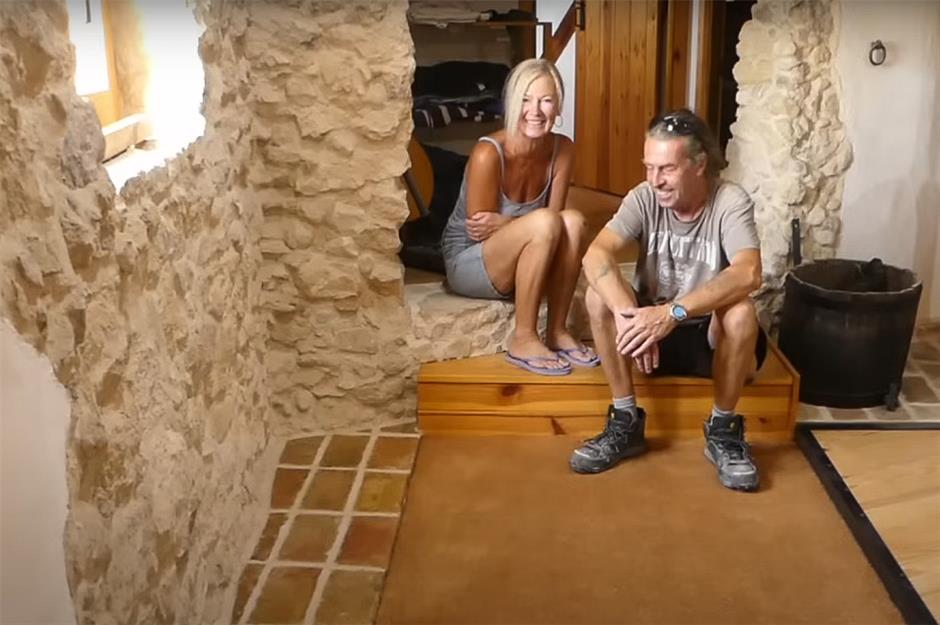
Andy and Sharon met while living on a campsite in Spain and started a business together offering caravan and boat storage. Despite being hit by dual disasters – catastrophic flooding in 2019 and the pandemic in 2020 – the business provided enough income for them to save €30,000 (£25k/$34k) to buy this farmhouse, known as a finca in Spain.
They began filming the renovation to help others interested in restoring old buildings and their content became a hit. Now, thousands tune in each week to their Finca Life YouTube channel.
The forgotten farmhouse stood derelict and abandoned

The couple is known among their audience for their hard work, relaxed attitude and trademark phrases like "let's crack on" and "another good job done" – so much so that they sell merchandise emblazoned with the slogans.
Their positivity was definitely needed as they had their work cut out for them. Nestled in the almond groves of Altiplano in Murcia, the farm was a shell with no running water or electricity. However, they could tell that the 19th-century property had promise.
Before: the old hayloft

When Sharon and Andy bought the farmhouse, it hadn't been lived in for years and no part of it was habitable.
Thankfully, this 500-square-foot (46sqm) self-contained hayloft offered the perfect space to renovate quickly so they'd have a place to cook, wash and sleep while they tackled the rest of the house.
What used to be the bodega became a spacious workshop, where the couple make and repair everything from bespoke cabinetry to barbecue components.
After: a bijou apartment

Despite its relatively small size, renovating the hayloft took Andy and Sharon several months, but as we can see, it was worth it.
Not only did they transform the exterior, they also built a bedroom and installed a kitchenette and bathroom, adding a wood-panelled ceiling and walls, a solid pine floor and a wood-burning stove.
Once they had a place to cook and sleep, they could finally start renovating the main house...
Before: a kitchen in need of attention
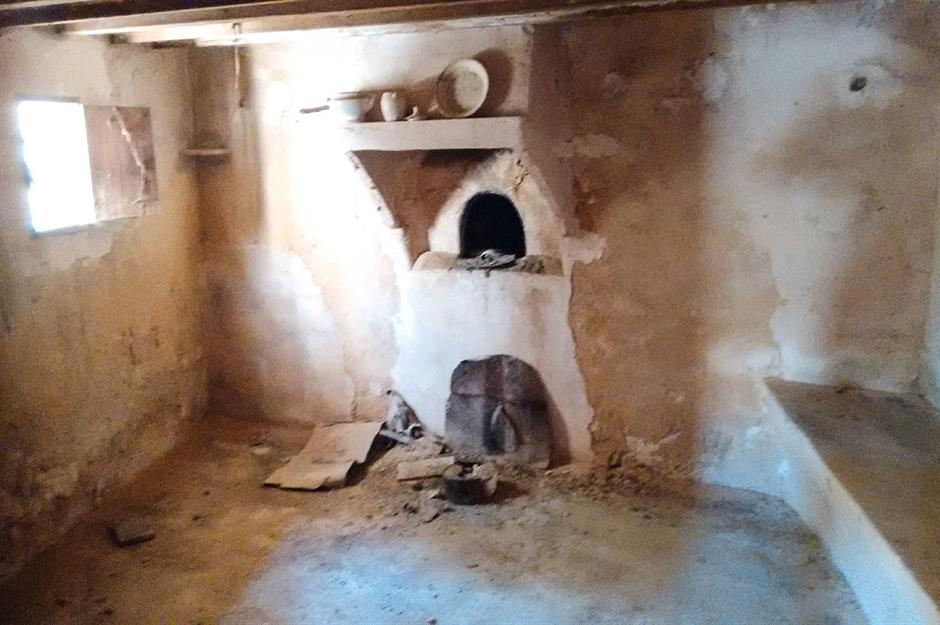
The intrepid duo certainly faced a challenge. The home was long-abandoned and suffering badly after years of neglect, as we can see from this photo taken of the old kitchen when Sharon and Andy first bought the finca.
Intriguingly, hidden behind the wall to the left of the old bread oven, the couple discovered a huge cave that the original owners may have used as a storage cellar.
Back to basics
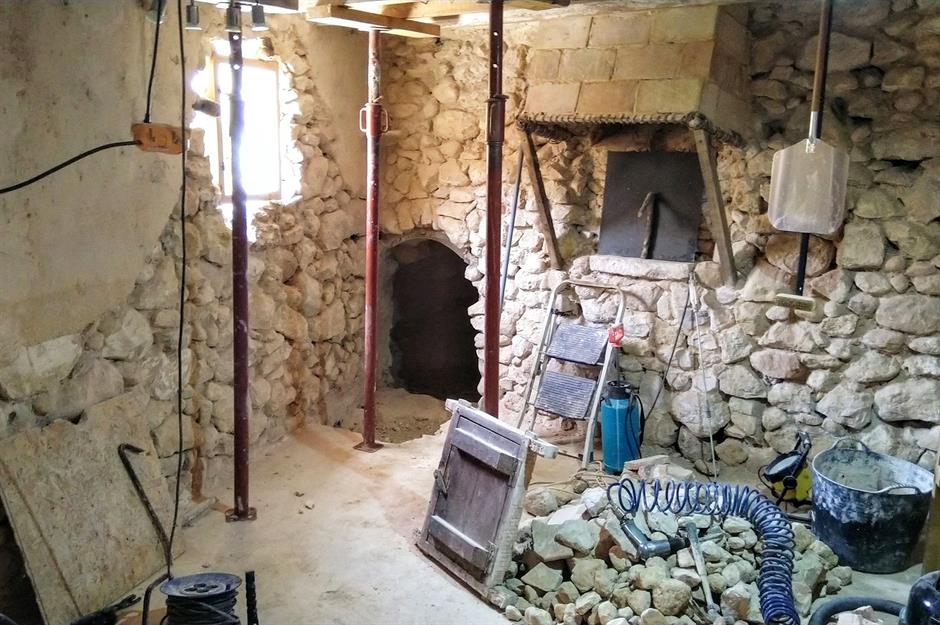
While dust storms raged outside, Andy took a heavy-duty hammer drill to the walls to chip away at the gypsum-based plaster. As he had suspected, this revealed original stonework beneath, as well as the entrance to the mysterious cave.
With the plaster removed, the damp, crumbling walls were allowed to breathe for the first time in decades.
The kitchen starts to take shape
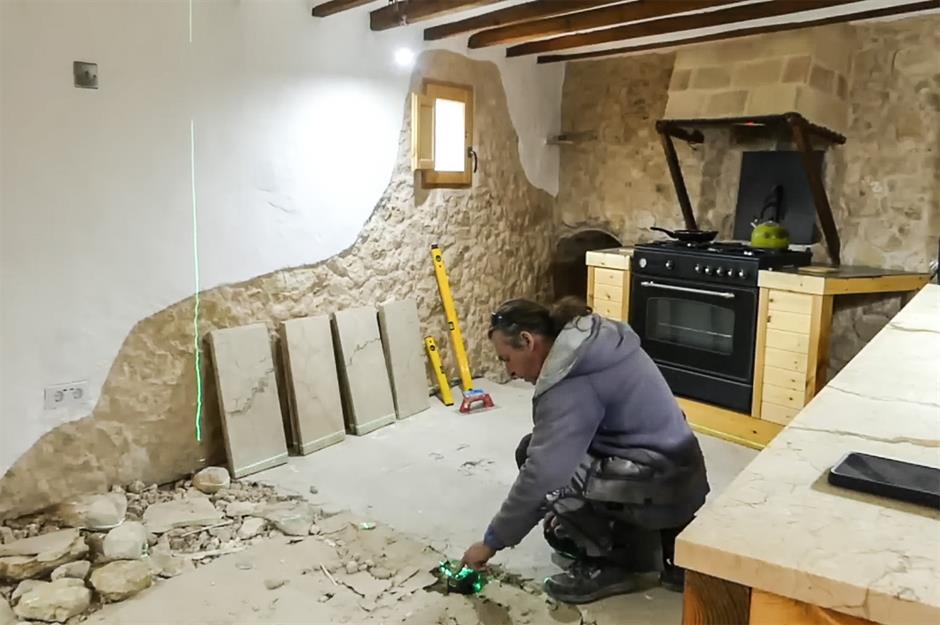
The pair spent weeks pointing the stone walls, applying lime plaster and following it up with traditional limewash.
Andy then laid a floor of reclaimed marble, restoring each tile himself. He also made this impressive range unit from reclaimed and repurposed materials, including the cooker itself.
After: all the hard work pays off

The finished space is bright and welcoming, yet it retains its traditional charm. The units and table are made from reclaimed timber and add warmth to the space.
While the room isn't quite big enough to house a full kitchen, it serves as a breakfast room and a place to cook.
Meanwhile, Andy and Sharon converted the old corral, where the original owners kept livestock, into a utility room. Let's take a look at that transformation next...
Before: renovations begin on the old corral
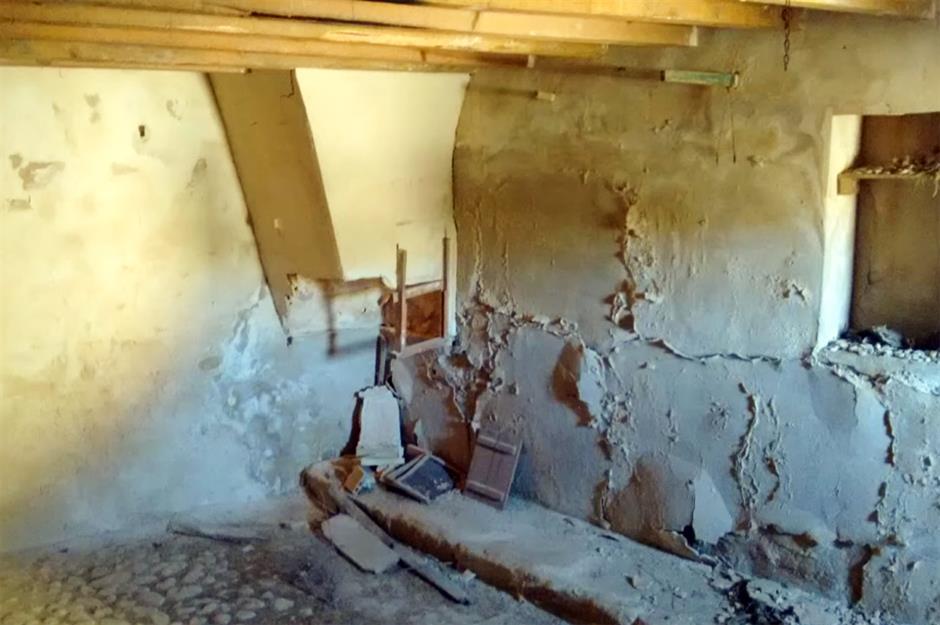
This room had been used for keeping animals, and it showed! The space even had the original built-in stone troughs along one wall, where the livestock would once have been fed.
Positioned right next to the old kitchen, it was the perfect place for a utility room and food preparation area. While the walls needed serious attention, the beautiful cobblestone floor was a feature the pair were determined to save.
After: the old corral is unrecognisable
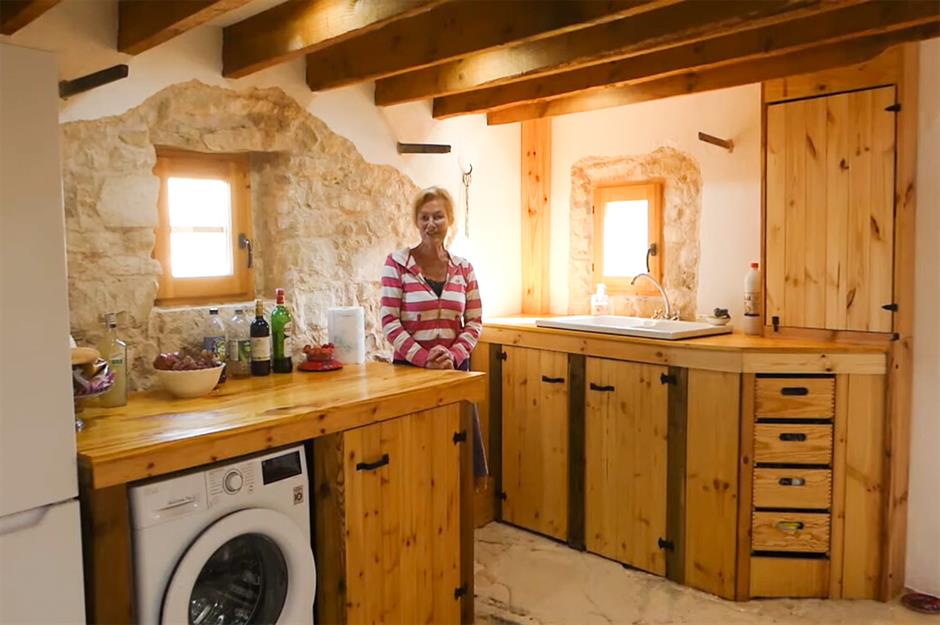
Andy and Sharon knocked off all the old plaster to expose the stone, added lime plaster and limewash in some areas and left the original stone exposed in others. Each stone had to be meticulously cleaned by hand with a wire brush before being pointed.
Despite extreme heat slowing them down, they transformed the space into this handy room. They even kept the old troughs, turning them into storage bins for the food they grow on the finca (but more on that later).
Before: work begins on the snug
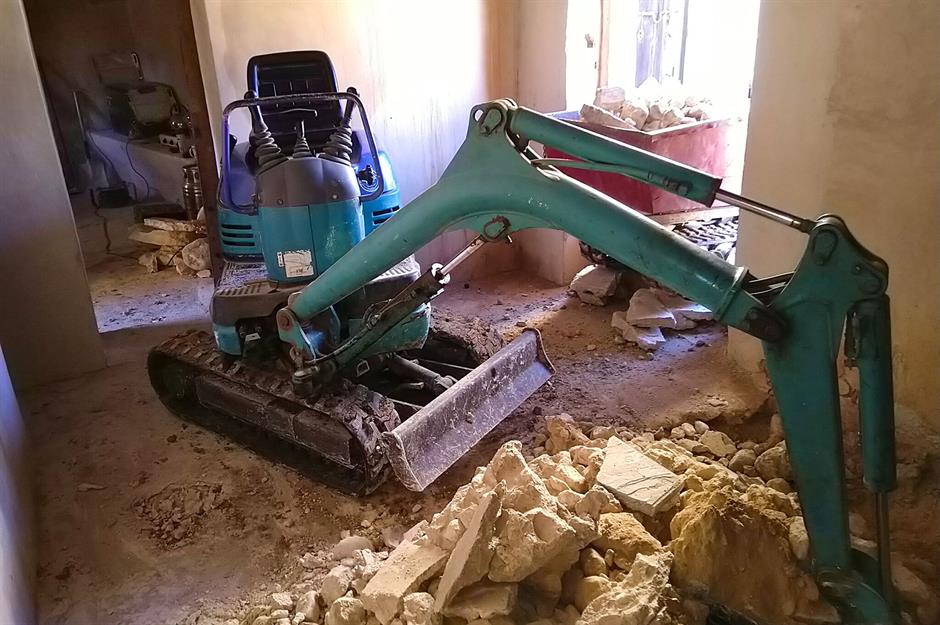
As the warm heart of the home, Sharon and Andy needed to finish the snug before winter arrived. However, it looked far from cosy when they started.
The doorway was so low that the pair kept banging their heads, so the first job was to dig down into the floor to increase the ceiling height. Unfortunately, the remaining rubble proved irresistible to the couple's six rescue cats, who began to use it as a litter tray.
The ceiling had seen better days
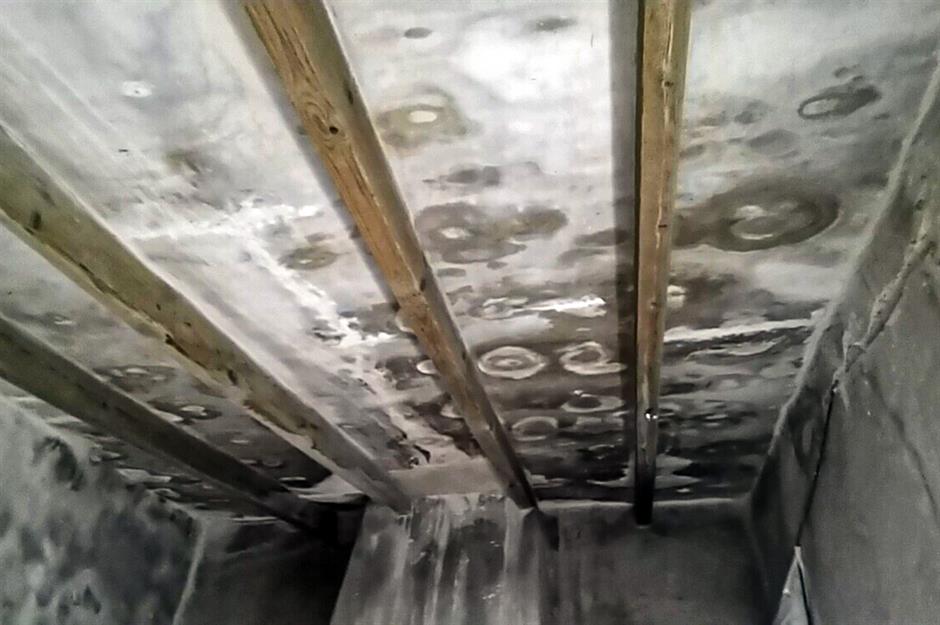
Due to a design flaw in the roof, around 85 years of leaks had badly cracked and stained the ceiling.
Andy first removed and replaced part of the roof to prevent more leaks. He then lime-plastered the ceiling and the chimney breast, before cleaning and restoring the old beams. The job, which he described as "a mission", took a full day up a ladder with his arms raised above his head. Torture!
A never-ending task
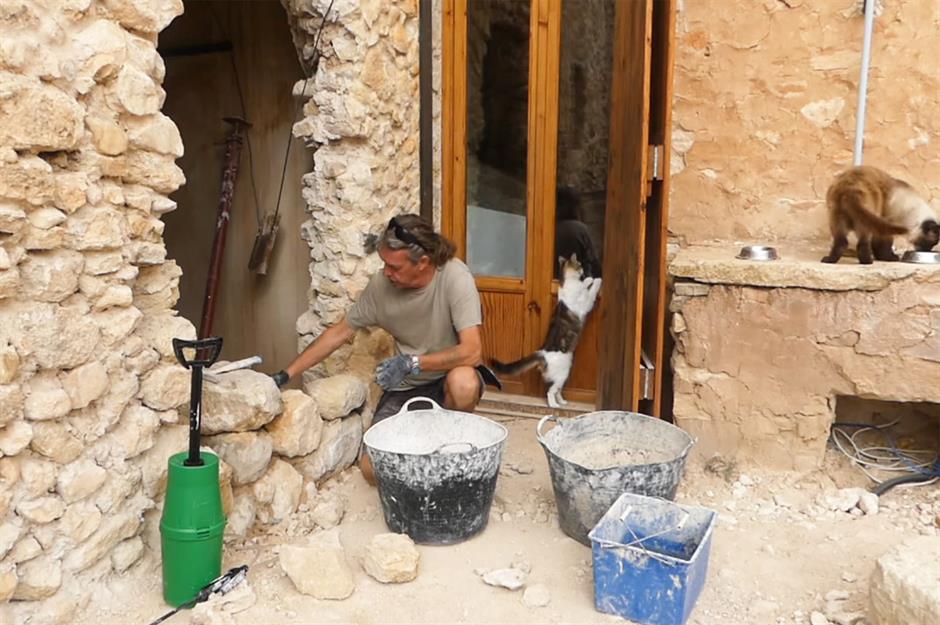
The pair used some of the stone they'd removed from the floor to partially block up the snug's old door, turning it into a window. Fans of their YouTube channel know by now that wall-building is a seemingly "never-ending task" on the finca.
Pictured here, two of the couple's pet cats watch Andy hard at work. They're just some of the rescued animals that live at the finca, which has quickly become a sanctuary for all manner of furry friends.
The snug exterior is complete
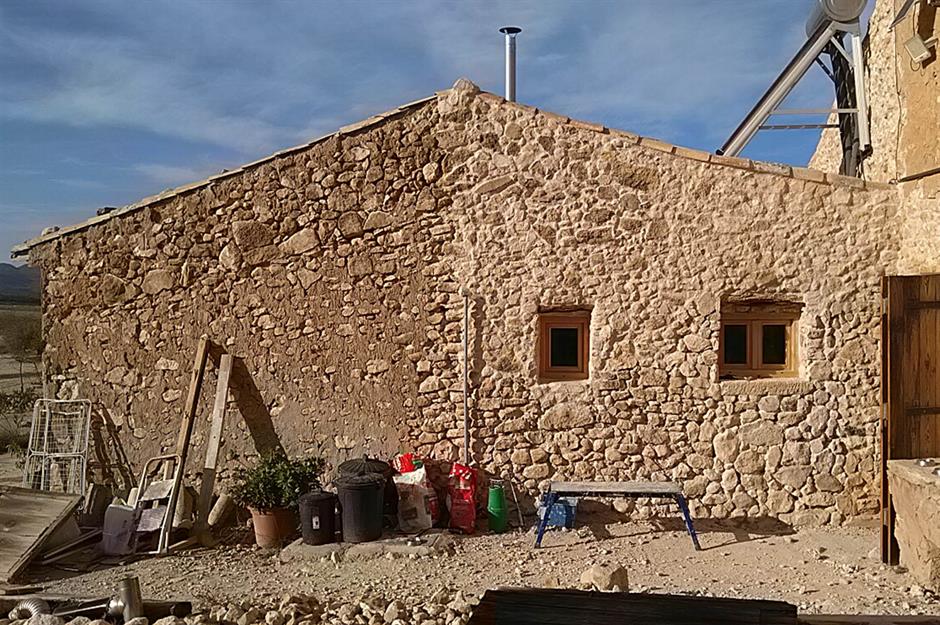
The snug forms the oldest part of the house. It may have once been a shepherd's hut, built even earlier than the rest of the farmhouse, which was constructed in 1870.
Sharon and Andy have been fascinated to uncover the history of the home, which became evident as they peeled back the layers added over the last 150 years.
Sharon lays the new floor

Once the door was blocked off, work could begin on transforming the interior into a livable space. Andy restored an old wood-burning stove and installed it beneath the original chimney breast, adding a beautiful barrel-vaulted log store beside it.
After pouring a limecrete floor, Sharon set about laying clay bricks on top and sealed them with a protective blend of linseed oil and turpentine.
After: the snug after months of hard work
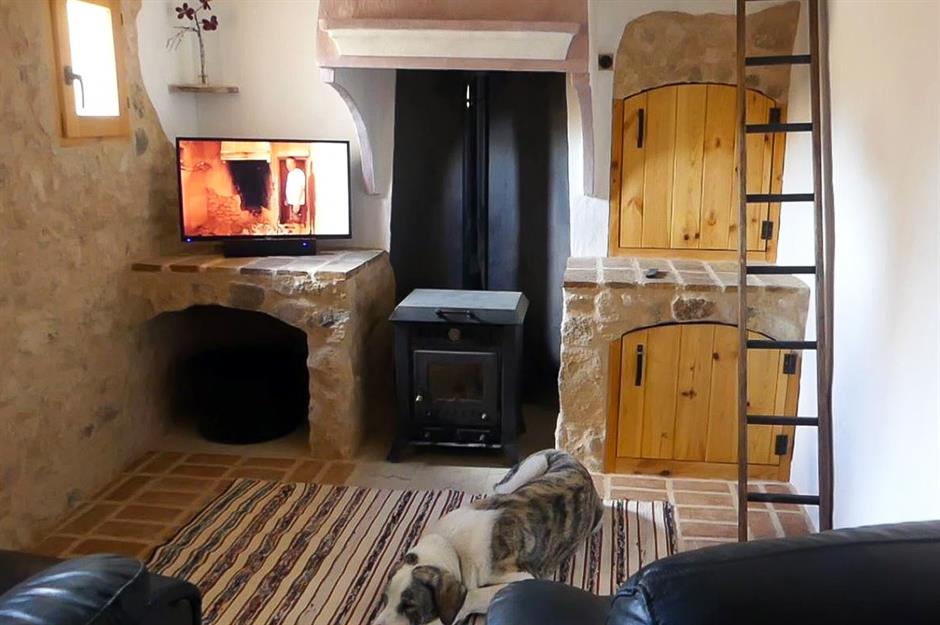
After nine long months, the snug was finally finished. The wood-burning stove, which burns old almond wood collected on the finca's grounds, gives off enough heat to not only warm the cosy room, but the kitchen and old corral too – perfect for chilly winter days.
As well as the interior, the farm's outside spaces needed a serious overhaul too...
Before: the rundown courtyard
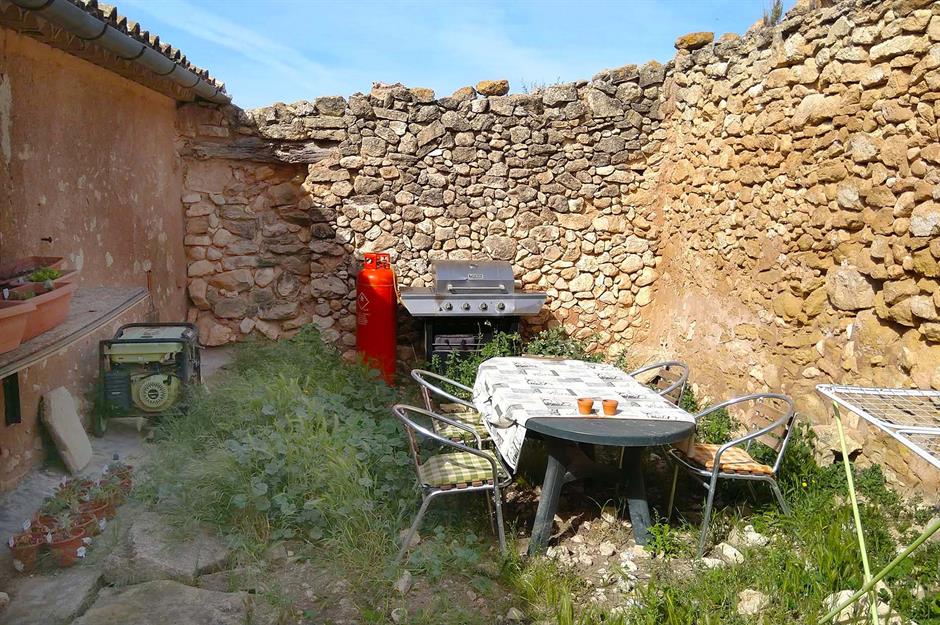
This courtyard was in a sorry state when Sharon and Andy moved in, with buckling walls and an uneven floor covered in rubble and choked with knee-high grass and weeds.
They first cleared the area and then reopened the original entrance, which had been blocked up by the previous owners. Andy made a gate from reclaimed timber they'd found lying around the property.
After: a space to relax and entertain
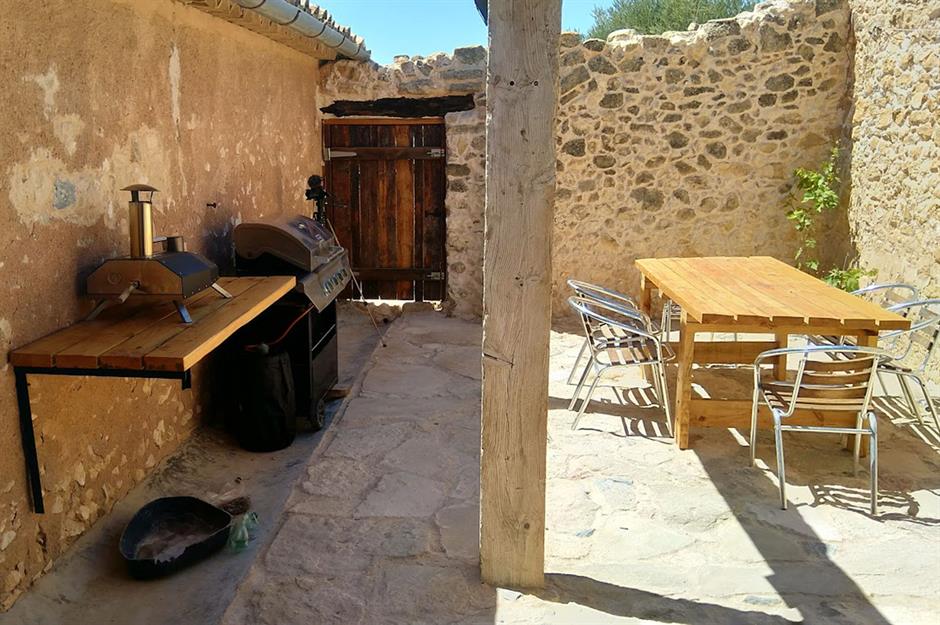
The pair sunk reclaimed railway sleepers – each weighing 130 pounds (59kg) – into the ground and topped them with a sailcloth
to create shade.
After stabilising the walls and laying down six-inch-thick (15cm) stones to create an even floor, Andy and Sharon's beautiful outdoor space was complete.
It's thirsty work renovating a 150-year-old home, so their YouTube followers regularly buy them a coffee to thank them for sharing their journey and this is the perfect place to enjoy it!
Before: the outdoor kitchen

The couple, labelled by one fan as "the quintessential dynamic duo", turned this promising corner of the courtyard into an outdoor kitchen, where head barbecue chef Andy can cook up a storm.
As you can see, the ancient storage shed to the left of this photo was in a dire state of repair. Meanwhile, the floor needed to be levelled, the overgrown tree in the lower courtyard had to be tamed and a roof was required to provide shade.
After: ready for alfresco feasts
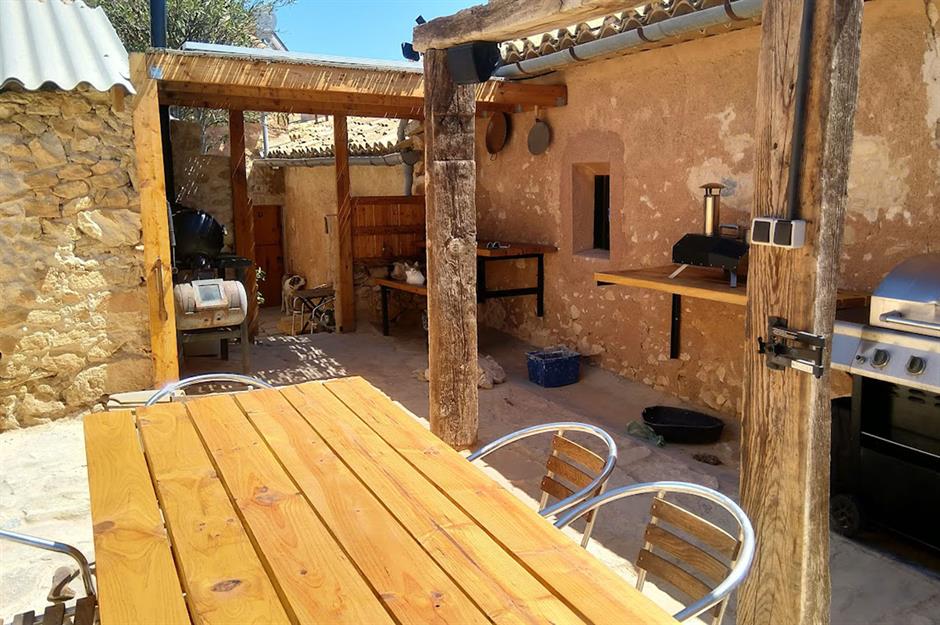
By moving their outdoor generator from the courtyard and into a soundproof box around the corner, Sharon and Andy created space for a barbecue and a smoker, as well as bespoke shelving for food prep and a pizza oven.
Of course, the house hasn't been the couple's only focus. The surrounding land also needs constant upkeep...
The pros and cons of living off-grid

Living off-grid gives homeowners a certain amount of independence, which was highlighted when the Iberian Peninsula was struck by a nationwide power outage in April 2025. Luckily for Sharon and Andy, the finca wasn't affected as it relies on solar power generated by a bank of panels in the garden.
However, self-sufficiency can have its drawbacks. When the area was hit by a drought in May 2024, the property's wells ran dry, leaving the couple with little water for themselves, their animals or their garden.
Fighting everyday challenges
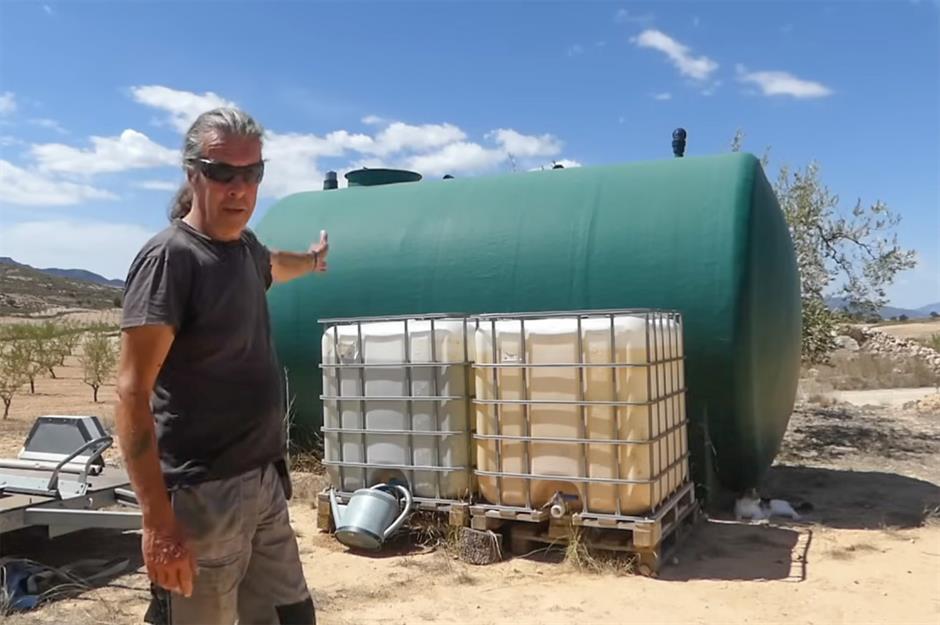
With no rain in sight, the couple bought this 4,400-gallon (20,000L) water tank, which gives them peace of mind in an age increasingly marked by climate uncertainty.
Meanwhile, the farm's solar panels weren't generating enough power on cloudy winter days. The duo solved this problem by adding panels to increase power by 33%. They also invested in an auto-start generator, which helps to provide continuous power – something Andy and Sharon describe as a "game changer" that they wish they'd done sooner.
Upcycling and self-sufficiency
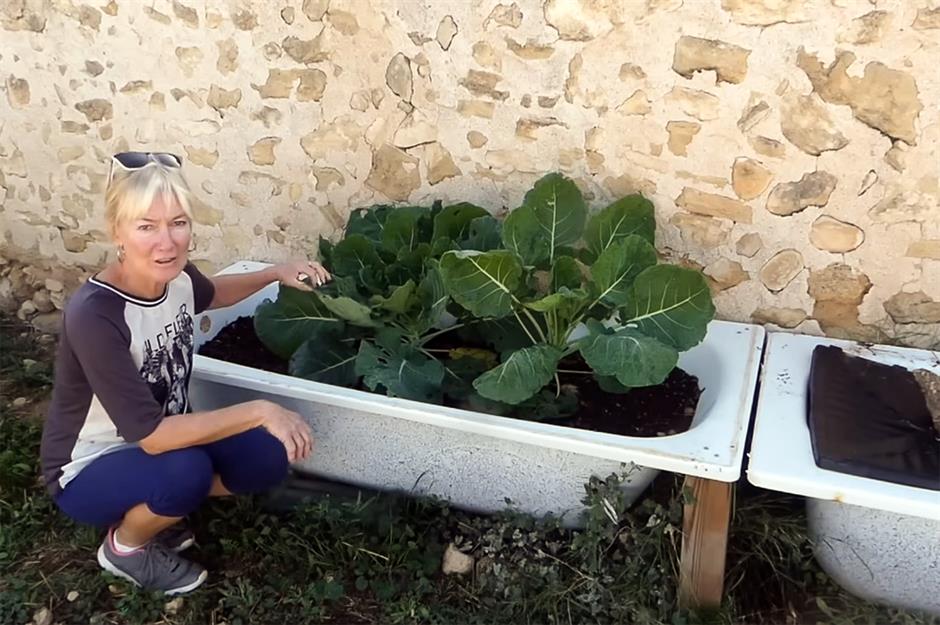
While finca life keeps throwing up surprises – like failing generators and solar panel fires – the couple's commitment to a self-sufficient lifestyle continues.
Not only do they keep hens for eggs, they also grow a wide variety of fruit and veg, including Brussels sprouts planted in an upcycled bathtub.
Despite having animals to look after and a house renovation to complete, Sharon still finds time to cure olives, preserve capers and plant and harvest everything from asparagus and root vegetables to peppers and herbs.
Working the land
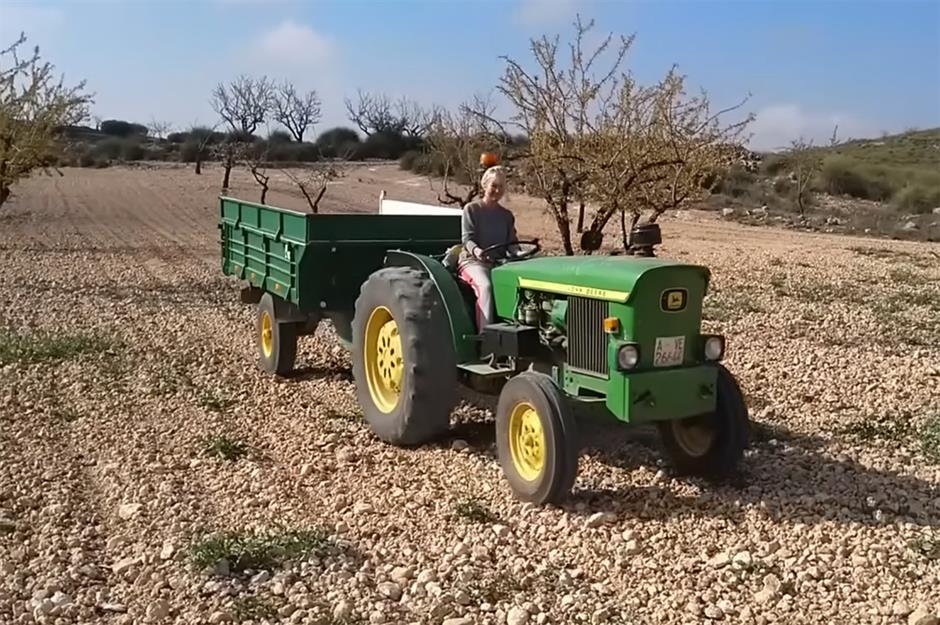
As well as producing olives and almonds, the acreage's grove provides wood to heat the house. The wood can also be turned into mulch to feed the soil.
The plot covers half an acre (0.2ha), however, there are a further six acres (2.4ha) behind the house that appear on the deeds, but which are disputed.
Andy and Sharon's solicitors are working on the issue, but the discrepancy is one of many to watch out for when buying a large rural property.
Creating a sanctuary
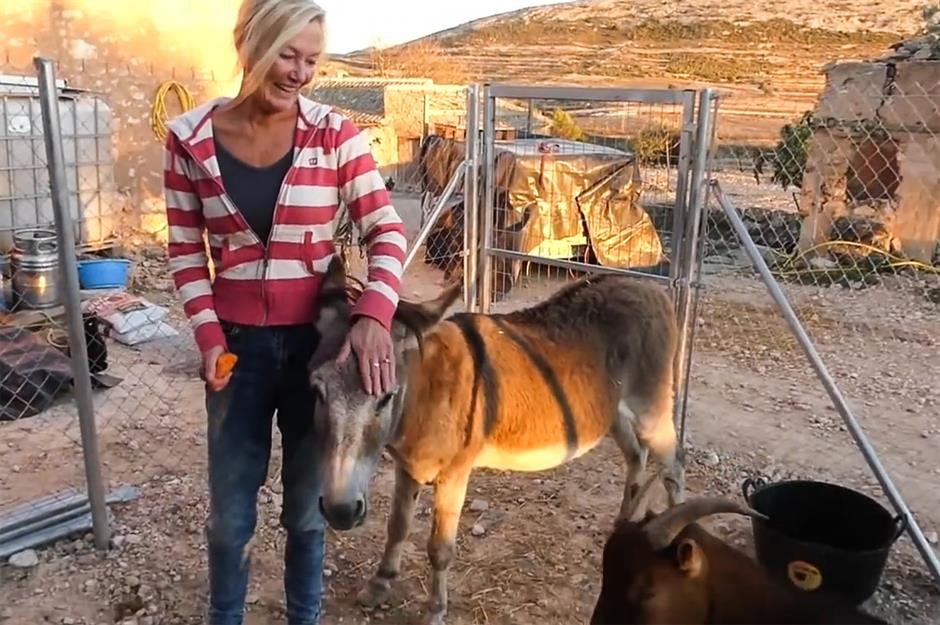
The farmhouse has become a home for more than just Sharon and Andy. The couple takes in rescued street cats and has as many as six living with them at any one time.
In 2021, they found a donkey in a poor state of health wandering down a road in the middle of the night. They named him Xote and set about 'restoring' him alongside the finca. A goat joined him a few months later and together the stablemates provide manure for the garden.
An idyllic home for a determined duo
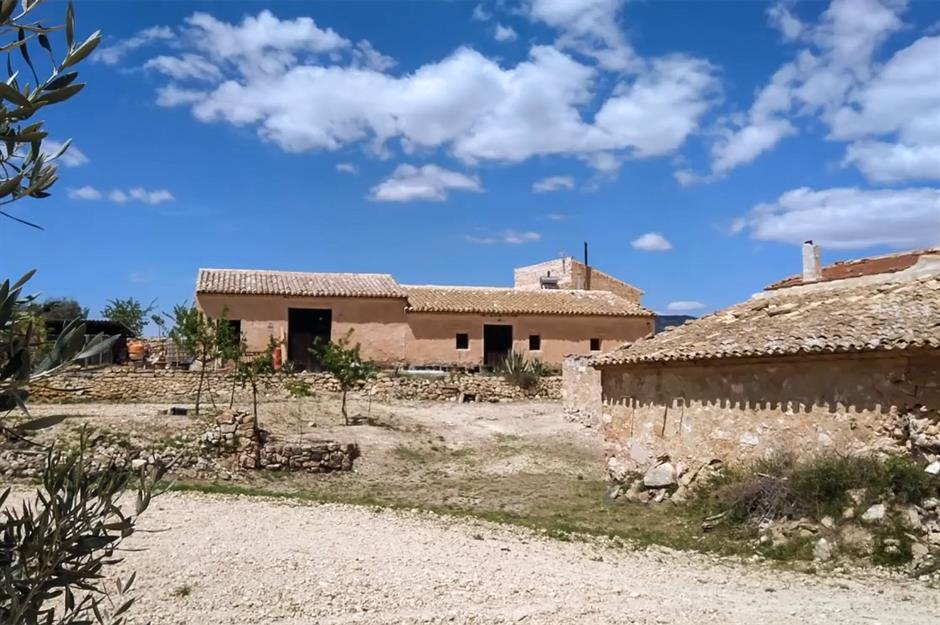
Despite being hit by 42°C (108°F) heat, dust storms and multiple minor disasters along the way, the idyllic farm continues to take shape and the transformation is a testament to their hard work.
"I guess it's just a lifestyle," Andy says of their seemingly voracious appetite for tackling one daunting job after another.
But how much has it cost the couple to live their debt-free dream?
The project's hidden costs revealed

While buying a home for just €30,000 (£25k/$34k) sounds like a dream come true, Sharon and Andy have been hit by a series of hidden costs.
On top of the purchase cost, they paid €8,500 (£7.1k/$9.6k) in taxes, fees and licences. Naturally, they needed an architect to draw up plans, which cost another €4,300 (£3.6k/$4.9k). The project was also subject to a €4,600 (£3.9k/$5.2k) tax, as well as an annual property tax.
"Make sure that you've got some money in the bank," Sharon warns. "If we hadn't had some cash to pay that, we'd have been in trouble."
What to watch out for when buying property in Spain
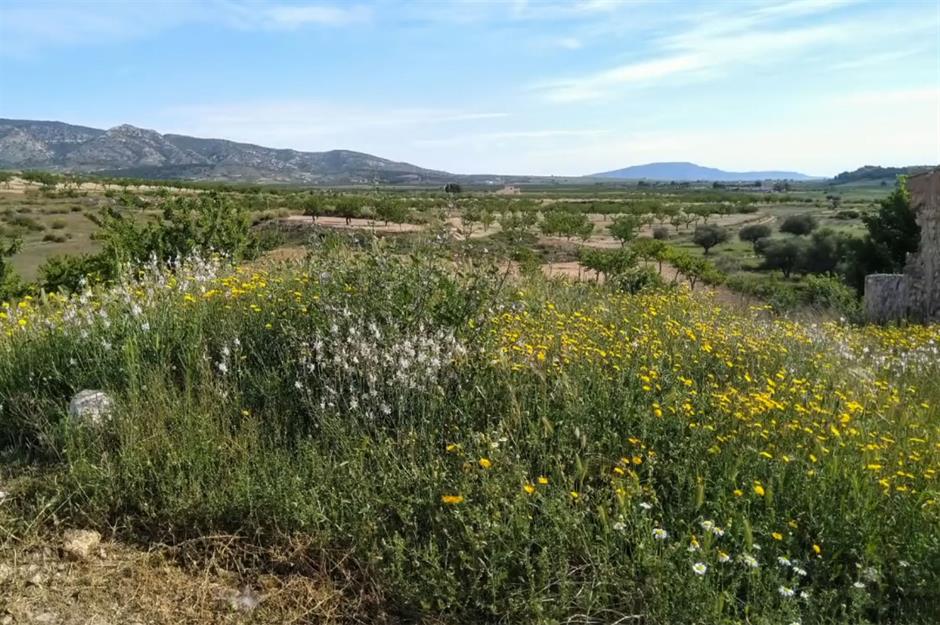
There are a number of obstacles to be aware of if you're considering buying a home in Spain.
Firstly, it's important to find out early on if your project is viable, as Spanish properties require a non-refundable 10-20% deposit that you'll lose if the sale falls through.
Also, ensure your solicitor checks that the house details on the cadastre register and the land register match exactly – it'll save you time, money and "horrendous" bureaucracy. Other important things to get in order are habitation certificates and building licenses.
Rescued from ruins
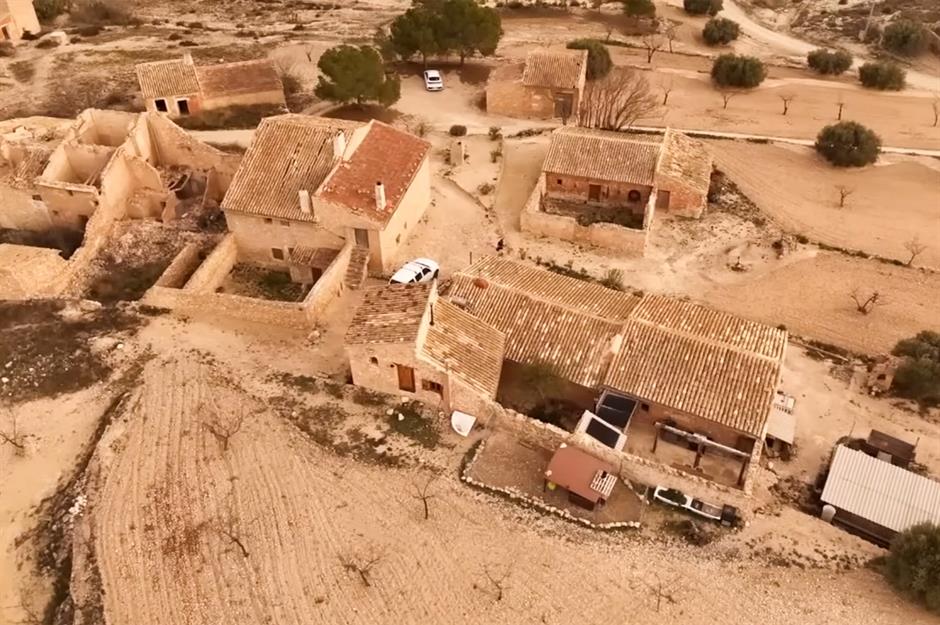
This aerial view of the finca taken in early 2025 shows just how much work Sharon and Andy have done to their home – particularly when you compare it to some of the neighbouring buildings, which now lie in ruins.
With few people willing to spend as much time and money on a renovation as this couple has, it's a stark reminder of what can happen to historic buildings when they're abandoned and forgotten.
What's next for Sharon and Andy?
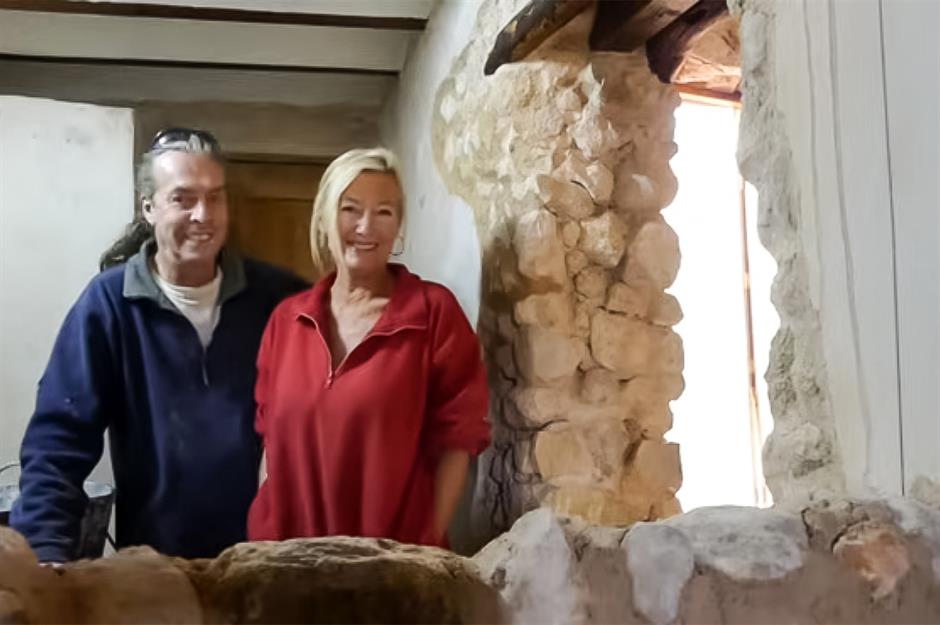
While the pair has considered income-generating ideas like renting out their hayloft apartment or running joinery or welding courses, they're content for now to spend time perfecting their home.
"We're not in a rush", says Andy. "It's more important to achieve perfection."
Incredibly, considering how much work they've already done, they still have more jobs to tackle, including renovating the master bedroom, office, living-dining room, lower courtyard and the home's frontage. Phew!
Loved this? Discover more amazing home transformations around the world
Comments
Be the first to comment
Do you want to comment on this article? You need to be signed in for this feature